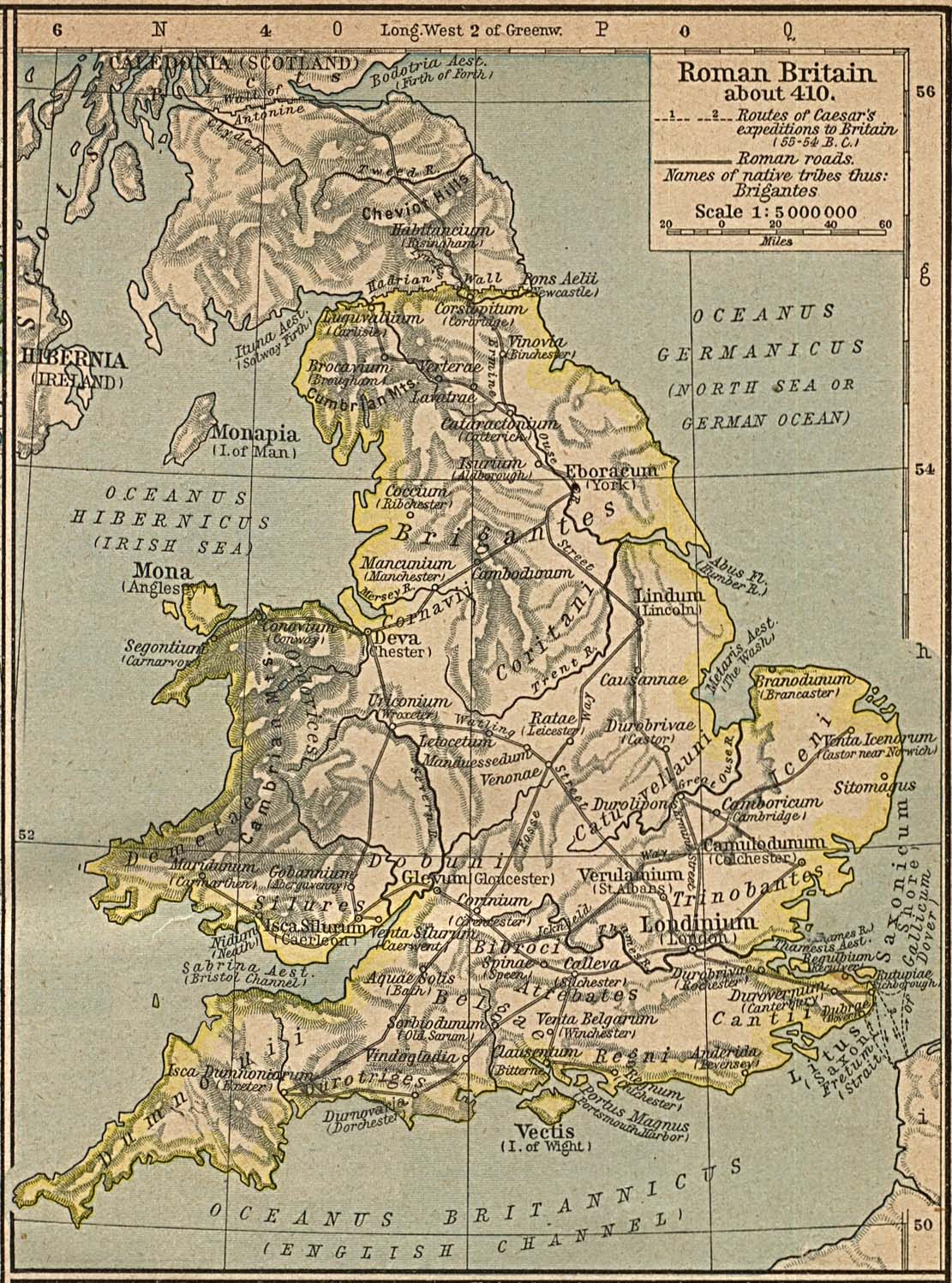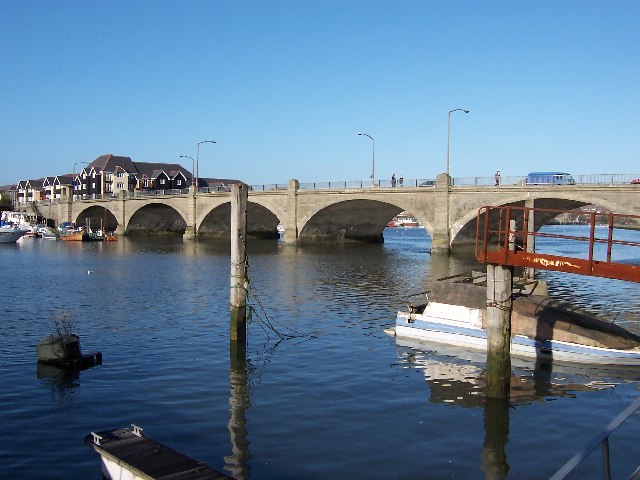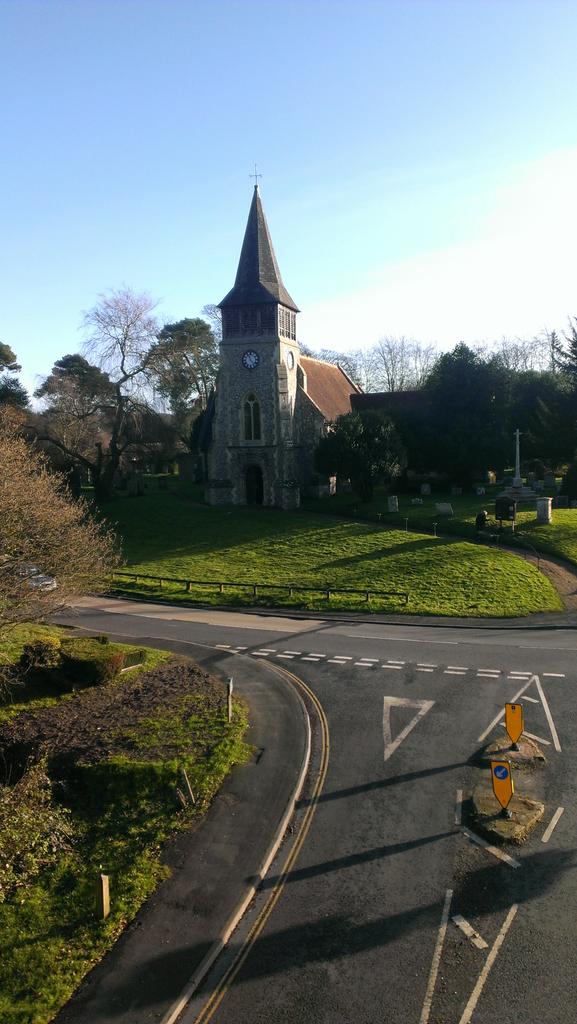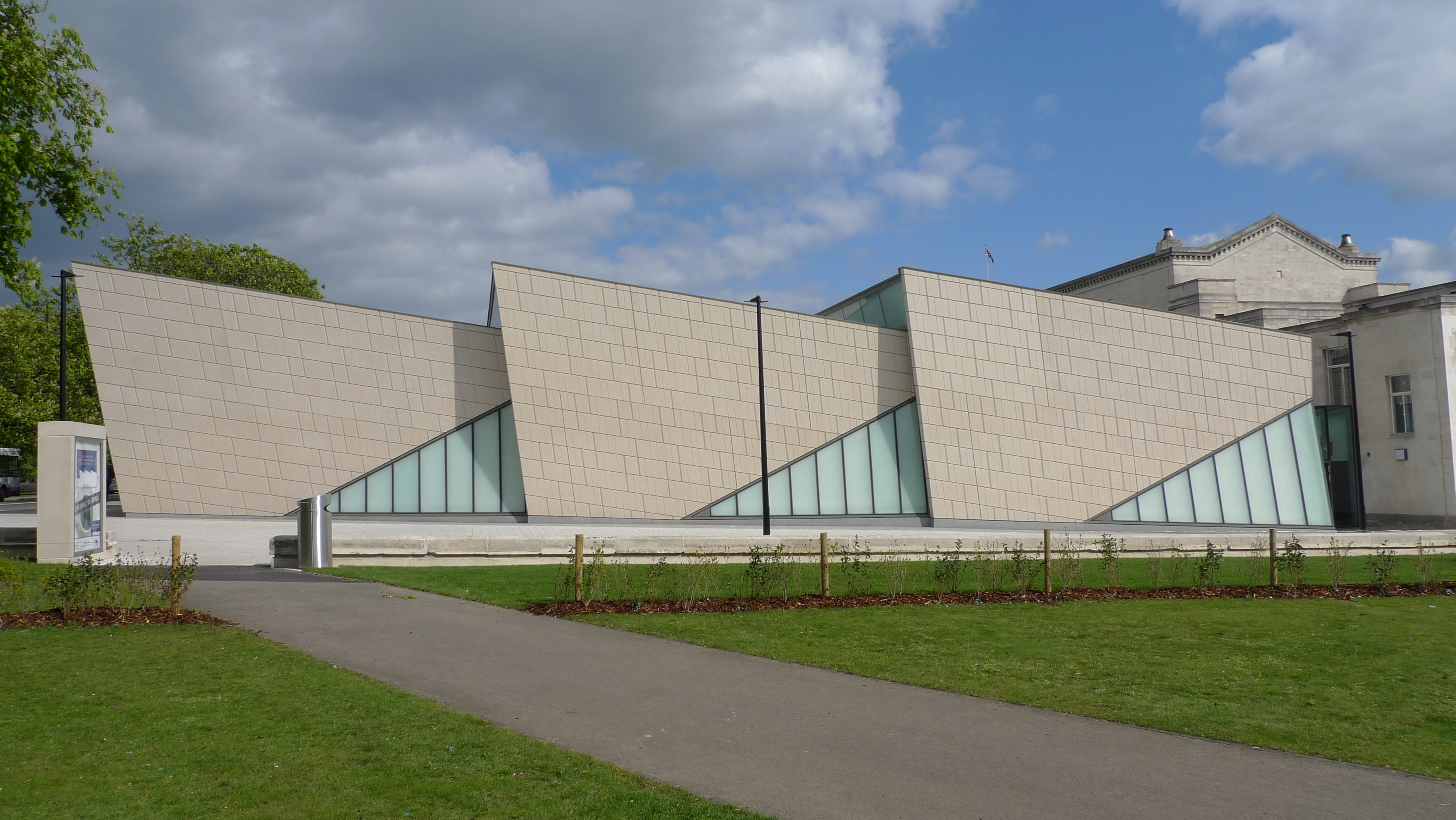|
Clausentum
Clausentum was a small town in the Roman province of Britannia. The site is believed to be located in Bitterne Manor, which is now a suburb of Southampton. Identification Route VII of the Antonine Itinerary documents the Roman settlement of Clausentum as being west of Noviomagus Reginorum (Chichester) and from Venta Belgarum (Winchester). In 1610, William Camden identified Southampton as being the site of Clausentum and described how at Bitterne he had seen "old broken walls, and trenches of an ancient castle". Around 1770, John Speed claimed that Clausentum was in the area that is now known as Bitterne Manor. In 1792, the antiquary Richard Warner investigated those claims and found a ditch, an earth bank and some Roman coins. Since then, this site has been investigated further and is generally accepted as the site of Clausentum, but there is no universal agreement. Reference to modern maps shows Bitterne Manor to be from Chichester. Wickham is at the junction of two Roman ... [...More Info...] [...Related Items...] OR: [Wikipedia] [Google] [Baidu] |
History Of Southampton
Southampton is a city in Hampshire, England. The area has been settled since the Stone Age. Its history has been affected by its geographical location, on a major estuary on the English Channel coast with an unusual double high-tide, and by its proximity to Winchester and London; the ancient and modern capitals of England. Having been an important regional centre for centuries, Southampton was awarded city status by Queen Elizabeth II in 1964 . Southampton became an important port in medieval times, experiencing several hundred years of fluctuating fortunes until it was expanded by the Victorians. As a centre of commerce, an industrial town and an important military embarkation point, Southampton was a strategic target for the Luftwaffe and was severely damaged in World War II. Post-war re-development and the need to accommodate 20th century innovations such as the motor car has significantly altered the character of Southampton. Prehistoric times Numerous gravel pits have be ... [...More Info...] [...Related Items...] OR: [Wikipedia] [Google] [Baidu] |
Molly Cotton
Mary Aylwin Cotton OBE, FSA, Hon FBA ( Marshall; 1902-1984),Potter, T. 1984. M. Aylwin Cotton, O.B.E., Hon. F.B.A. F.S.A 1902-1984. Papers of the British School at Rome 52: 1-2. known as Molly Cotton, was a British archaeologist and former doctor, noted for her work in Iron Age Britain - particularly hill forts - and Roman Italy. She trained archaeology students at the British School at Rome. In 1946, Cotton received an OBE for outstanding contributions to the war effort. In 1972, the Dr M. Aylwin Cotton Foundation was established to fund fellowships and publication grants for the study of archaeology. She was married to Dr Thomas Forrest Cotton, a Canadian cardiologist. Early life Mary Aylwin Marshall was born on 1 August 1902, on the Isle of Man. Her parents were Robert Marshall, a medical doctor, and Anna Elizabeth Marshall. She had a sister, Doris. Medical career Molly Cotton was one of the first students to train at the London School of Medicine for Women, and St. M ... [...More Info...] [...Related Items...] OR: [Wikipedia] [Google] [Baidu] |
Southampton
Southampton () is a port City status in the United Kingdom, city in the ceremonial county of Hampshire in southern England. It is located approximately south-west of London and west of Portsmouth. The city forms part of the South Hampshire, South Hampshire built-up area, which also covers Portsmouth and the towns of Havant, Waterlooville, Eastleigh, Fareham and Gosport. A major port, and close to the New Forest, it lies at the northernmost point of Southampton Water, at the confluence of the River Test and River Itchen, Hampshire, Itchen, with the River Hamble joining to the south. Southampton is classified as a Medium-Port City . Southampton was the departure point for the and home to 500 of the people who perished on board. The Supermarine Spitfire, Spitfire was built in the city and Southampton has a strong association with the ''Mayflower'', being the departure point before the vessel was forced to return to Plymouth. In the past century, the city was one of Europe's mai ... [...More Info...] [...Related Items...] OR: [Wikipedia] [Google] [Baidu] |
Bitterne Manor
Bitterne Manor is a suburb of Southampton surrounding the manor house of the same name. It is located on the eastern bank of the River Itchen, across Cobden Bridge from St Denys. History Bitterne Manor is the site of the original Roman settlement of ''Clausentum'', the forerunner to today's City of Southampton. Archaeological evidence shows Saxon activity around Bitterne Manor and the area within the old Roman walls may have been the Burh of Hampton The manor house has existed from Norman times and possibly earlier, and was built from the stones of Clausentum. The house was used by the Bishop of Winchester, who travelled from manor to manor with his court throughout each year. The manor house also operated as a farm, and was surrounded by parkland. Bitterne Park today, though, is a built-up area. With its easy access to the River Itchen and the navigation to Winchester, Bitterne Manor was used by the bishops as a distribution centre for wine and salt, which was panned in ... [...More Info...] [...Related Items...] OR: [Wikipedia] [Google] [Baidu] |
Ancasta
Ancasta was a Celtic goddess worshipped in Roman Britain. She is known from a single dedicatory inscription found in the United Kingdom at the Roman settlement of ''Clausentum'' (Bitterne, near Southampton). Ancasta may be taken to be a local goddess, possibly associated with the nearby River Itchen. The votive dedication to Ancasta reads: :DEAE ANCASTAE GEMINVS MANI VSLM :"To the goddess Ancasta, Geminus Mani iuswillingly and deservedly fulfills his vow." It may be possible that the name 'Ancasta' is related to Proto-Celtic ''*kasto-'' meaning 'swift'.Centre for Advanced Welsh and Celtic Studies, University of Wales.Proto-Celtic—English lexicon" (See alsthis pagefor background and disclaimers.) The inscription is now in the SeaCity Museum.Clausentum Pastscape, retrieved 13 January 2012 It was previous in the museum at < ... [...More Info...] [...Related Items...] OR: [Wikipedia] [Google] [Baidu] |
Wickham, Hampshire
Wickham () is a large village and civil parish in Hampshire, England, about three miles north of Fareham. At the 2001 census, it had a population of 4,816, falling to 4,299 at the 2011 Census. Wickham has a wide and well-proportioned square lined with historic buildings and is designated a conservation area. It was the fording place of the River Meon on the Roman road between Noviomagus Regnorum (Chichester) and Venta Belgarum (Winchester), and the inferred divergent point of the route to Clausentum (Bitterne). The Roman road from Wickham to Chichester is still followed today by local roads, passing behind Portsdown Hill to the north of Portsmouth Harbour and then onwards via Havant. In contrast, the route to Winchester is mostly likely lost through neglect in the Dark Ages, before present field patterns emerged. There have been a reasonable number of sites identified nearby associated with Romano-British industry. These have mainly been pottery kilns focused around the lim ... [...More Info...] [...Related Items...] OR: [Wikipedia] [Google] [Baidu] |
Richard Warner (antiquary)
Rev. Richard Warner (1763–1857) was an English clergyman and writer of a considerable number of topographical books based on his walks and his interest in antiquarianism. Early life Richard Warner was born in St. Marylebone on 18 October 1763. His father, also Richard Warner, was a respectable London tradesman who owned the Two Civet Cats & Olive Tree, an Italian warehouse or delicatessen shop in fashionable New Bond Street. His early education was undertaken by a Scottish nanny, but at the age of five he was separated from his happy home life and sent to a boarding school located closer to the centre of London. His removal from this unhappy environment came in about 1775 when his father retired and moved his family to the sedate town of Lymington on the south coast. There Warner was educated at Christchurch Grammar School, which was housed in a chamber high above the Lady chapel of the ancient Priory church. He there met and befriended fellow student Harry Burrard of Walhampt ... [...More Info...] [...Related Items...] OR: [Wikipedia] [Google] [Baidu] |
Saxon Shore
The Saxon Shore ( la, litus Saxonicum) was a military command of the late Roman Empire, consisting of a series of fortifications on both sides of the Channel. It was established in the late 3rd century and was led by the " Count of the Saxon Shore". In the late 4th century, his functions were limited to Britain, while the fortifications in Gaul were established as separate commands. Several Saxon Shore forts survive in east and south-east England. Background During the latter half of the 3rd century, the Roman Empire faced a grave crisis. Internally, it was weakened by civil wars, the violent succession of brief emperors, and secession in the provinces, while externally it faced a new wave of attacks by barbarian tribes. Most of Britain had been part of the empire since the mid-1st century. It was protected from raids in the north by the Hadrianic and Antonine Walls, while a fleet of some size was also available. However, as the frontiers came under increasing external pre ... [...More Info...] [...Related Items...] OR: [Wikipedia] [Google] [Baidu] |
River Itchen, Bitterne Manor - Geograph
A river is a natural flowing watercourse, usually freshwater, flowing towards an ocean, sea, lake or another river. In some cases, a river flows into the ground and becomes dry at the end of its course without reaching another body of water. Small rivers can be referred to using names such as creek, brook, rivulet, and rill. There are no official definitions for the generic term river as applied to geographic features, although in some countries or communities a stream is defined by its size. Many names for small rivers are specific to geographic location; examples are "run" in some parts of the United States, "burn" in Scotland and northeast England, and "beck" in northern England. Sometimes a river is defined as being larger than a creek, but not always: the language is vague. Rivers are part of the water cycle. Water generally collects in a river from precipitation through a drainage basin from surface runoff and other sources such as groundwater recharge, springs, a ... [...More Info...] [...Related Items...] OR: [Wikipedia] [Google] [Baidu] |
Venus (mythology)
Venus (), , is a Roman goddess, whose functions encompass love, beauty, desire, sex, fertility, prosperity, and victory. In Roman mythology, she was the ancestor of the Roman people through her son, Aeneas, who survived the fall of Troy and fled to Italy. Julius Caesar claimed her as his ancestor. Venus was central to many religious festivals, and was revered in Roman religion under numerous cult titles. The Romans adapted the myths and iconography of her Greek counterpart Aphrodite for Roman art and Latin literature. In the later classical tradition of the West, Venus became one of the most widely referenced deities of Greco-Roman mythology as the embodiment of love and sexuality. She is usually depicted nude in paintings. Etymology The Latin theonym ''Venus'' and the common noun ''venus'' ('love, charm') stem from a Proto-Italic form reconstructed as ''*wenos-'' ('desire'), itself from Proto-Indo-European (PIE) ' ('desire'; cf. Messapic ''Venas'', Old Indic ''vá ... [...More Info...] [...Related Items...] OR: [Wikipedia] [Google] [Baidu] |
Hercules
Hercules (, ) is the Roman equivalent of the Greek divine hero Heracles, son of Jupiter and the mortal Alcmena. In classical mythology, Hercules is famous for his strength and for his numerous far-ranging adventures. The Romans adapted the Greek hero's iconography and myths for their literature and art under the name ''Hercules''. In later Western art and literature and in popular culture, ''Hercules'' is more commonly used than ''Heracles'' as the name of the hero. Hercules is a multifaceted figure with contradictory characteristics, which enabled later artists and writers to pick and choose how to represent him. This article provides an introduction to representations of Hercules in the later tradition. Mythology Birth and early life In Roman mythology, although Hercules was seen as the champion of the weak and a great protector, his personal problems started at birth. Juno sent two witches to prevent the birth, but they were tricked by one of Alcmene's servants an ... [...More Info...] [...Related Items...] OR: [Wikipedia] [Google] [Baidu] |
SeaCity Museum
The SeaCity Museum is a museum in Southampton, England, which opened on 10 April 2012 to mark the centenary of RMS ''Titanics departure from the city. It is housed within a part of the Grade II* listed civic centre building which previously housed the magistrates' court and police station. The museum contains two permanent exhibitions, one dedicated to Southampton's connection with RMS ''Titanic'', and the other to the city's role as gateway to the world. A third space for temporary exhibitions is housed in a purpose-built pavilion extension to the civic centre. Further phases of development may yet add to the exhibition space. The museum was designed by Wilkinson Eyre with Kier Southern serving as the main contractor. The budget for the museum was £15M, approximately £5M of which came from the Heritage Lottery Fund, with Southampton City Council and Southampton Cultural Development Trust providing the remainder. The council had planned on selling works from their ... [...More Info...] [...Related Items...] OR: [Wikipedia] [Google] [Baidu] |








